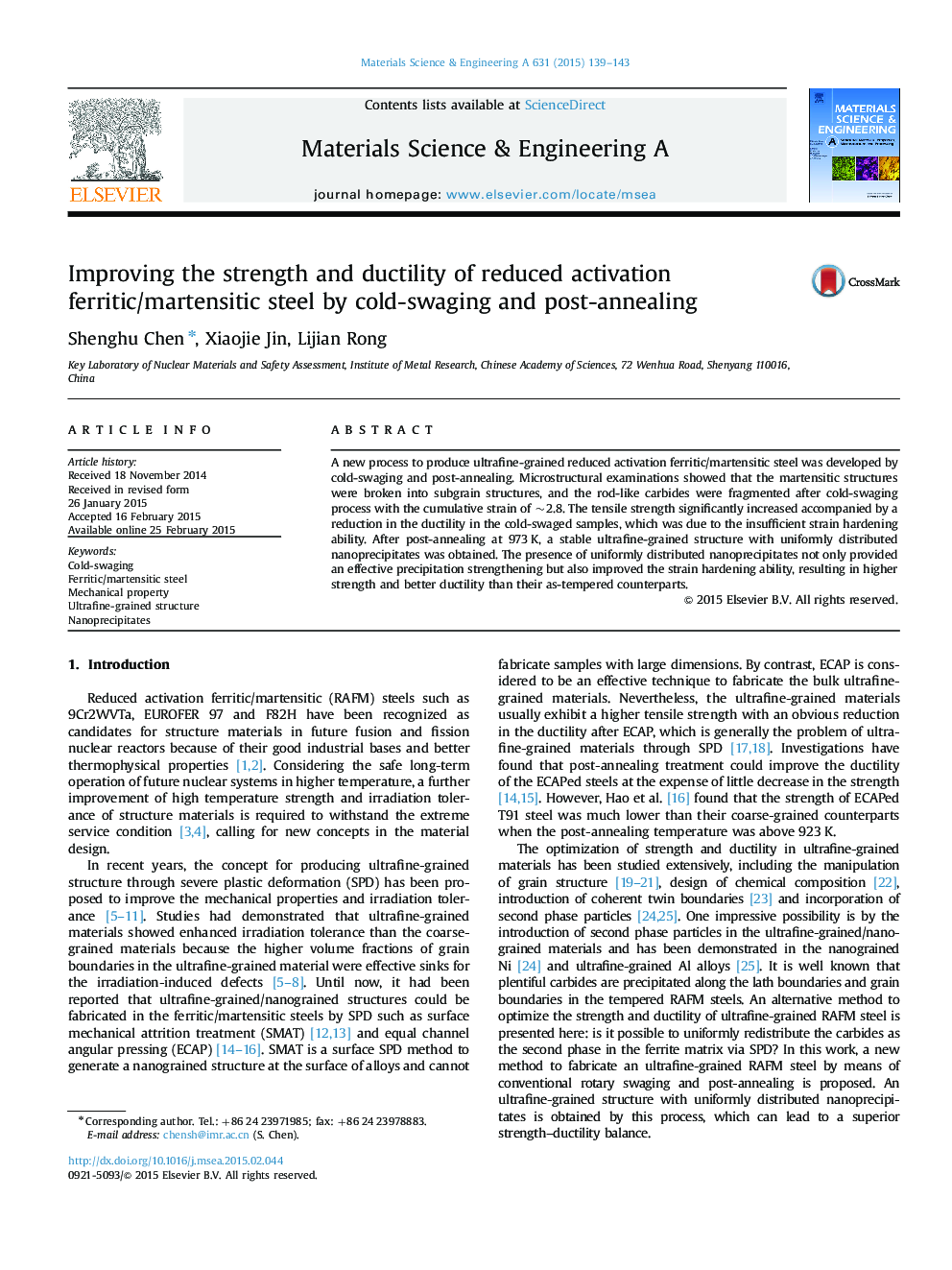| Article ID | Journal | Published Year | Pages | File Type |
|---|---|---|---|---|
| 1574415 | Materials Science and Engineering: A | 2015 | 5 Pages |
Abstract
A new process to produce ultrafine-grained reduced activation ferritic/martensitic steel was developed by cold-swaging and post-annealing. Microstructural examinations showed that the martensitic structures were broken into subgrain structures, and the rod-like carbides were fragmented after cold-swaging process with the cumulative strain of ~2.8. The tensile strength significantly increased accompanied by a reduction in the ductility in the cold-swaged samples, which was due to the insufficient strain hardening ability. After post-annealing at 973Â K, a stable ultrafine-grained structure with uniformly distributed nanoprecipitates was obtained. The presence of uniformly distributed nanoprecipitates not only provided an effective precipitation strengthening but also improved the strain hardening ability, resulting in higher strength and better ductility than their as-tempered counterparts.
Related Topics
Physical Sciences and Engineering
Materials Science
Materials Science (General)
Authors
Shenghu Chen, Xiaojie Jin, Lijian Rong,
